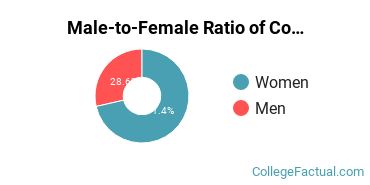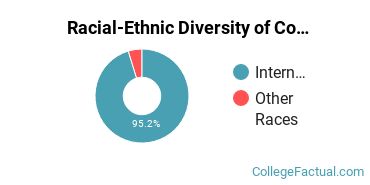 by our College Data Analytics Team
by our College Data Analytics TeamComputer Science is a concentration offered under the computer science major at Sofia University. Here, you’ll find out more about the major master’s degree program in computer science, including such details as the number of graduates, diversity of students, and more.
You can jump to any section of this page using the links below:
During the 2019-2020 academic year, part-time graduate students at Institute of Transpersonal Psychology paid an average of $0 per credit hour. No discount was available for in-state students. The following table shows the average full-time tuition and fees for graduate student.
| In State | Out of State | |
|---|---|---|
| Tuition | $15,460 | $15,460 |
| Fees | $500 | $500 |
Learn about other programs related to <nil> that might interest you.
MS in Information Technology - Software Application Development
Learn to manage the development process for a software program with this specialized online master's from Southern New Hampshire University.
Institute of Transpersonal Psychology does not offer an online option for its computer science master’s degree program at this time. To see if the school offers distance learning options in other areas, visit the Institute of Transpersonal Psychology Online Learning page.
About 71.4% of the students who received their MS in computer science in 2019-2020 were women. This is higher than the nationwide number of 29.4%.

Of those students who received a master’s degree at Institute of Transpersonal Psychology in computer science at 2019-2020, none were racial-ethnic minorities*.

| Race/Ethnicity | Number of Students |
|---|---|
| Asian | 0 |
| Black or African American | 0 |
| Hispanic or Latino | 0 |
| Native American or Alaska Native | 0 |
| Native Hawaiian or Pacific Islander | 0 |
| White | 0 |
| International Students | 20 |
| Other Races/Ethnicities | 1 |
*The racial-ethnic minorities count is calculated by taking the total number of students and subtracting white students, international students, and students whose race/ethnicity was unknown. This number is then divided by the total number of students at the school to obtain the racial-ethnic minorities percentage.
More about our data sources and methodologies.